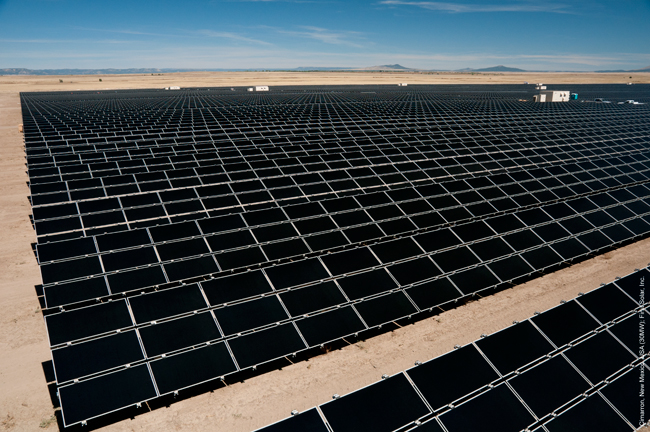The Bright Side of a Solar Industry Shakeout
With so many solar company bankruptcies, you’d think the industry is in a death spiral. But a study out today shows that manufacturers’ pains–and new financing options–have led to brisk business for installing solar power.

Installations of solar photovoltaic power hit 506 megawatts in the first quarter of this year in the U.S. across 18,000 sites, an 85 percent jump in megawatts from the first quarter last year, according to a report from the Solar Energy Industry Association done with GTM Research.
The surprisingly strong numbers led forecasters to revise estimates for total installations this year upward to almost 3,300 megawatts, or 3.3 gigawatts of newly installed capacity.
The main reason solar panels are flying onto rooftops is the same reason so many solar manufacturers are struggling: falling prices. The average price for a solar array fell 17 percent in the first quarter alone and the average module, or panel, price dropped below $1 per watt for the first time.
Led by Chinese producers, the industry has essentially flooded the market with all manner of components, leading to an overcapacity which GTM Research analyst Shayle Kann doesn’t see ending until well into next year. On the business side, brutal price competition has contributed to a number of solar company bankruptcies, including Solyndra, Germany’s Solon, and BP Solar, and tough times even for price leader First Solar.
But cheaper product isn’t the whole story behind the buoyant demand. Financing has matured substantially in the past few years to the point where dozens of companies now offer a solar lease or power purchase agreement to consumers and businesses. Financing options–either by paying for the power panels produce or a monthly lease–means consumers don’t need to spend a lot of money upfront to purchase solar panels, a perennial barrier to broad market penetration.
“We’re seeing these new innovative models such as solar leasing taking off in many of the states where it’s legislatively allowed,” said Tom Kimbis, the vice president of strategy and external affairs at SEIA.
Technology-wise, polycrystalline solar panels remain the dominant technology but the SEIA/GTM Research report notes that concentrating solar power systems are making headway in the utility market. In the first quarter, 1.1 gigawatts of concentrating solar power capacity is now under construction, which includes heat-driven concentrating solar power and concentrating photovoltaic systems.
New solar cell technologies are pushing prices downward on flat panels as well. Manufacturers, such as First Solar and General Electric, are ramping up production of more efficient thin film panels to compete better on cost per watt.
The forecast for next year in the U.S. is mixed. A federal cash grant program expired at the end of last year, which will create a financing bottleneck for utility and commercial projects early next year, Kann said. Also, tariffs imposed on Chinese solar panels by the U.S. Commerce Department could affect prices significantly, he said.
But even those factors and a shaky global economy, the U.S. market has good prospects, with GTM Media predicting 25 gigawatts of solar installed by the end of 2016.
“It would be unimaginable to consider the U.S. market would actually shrink any time in the near future. But we’ve come to expect growth like what we’re reporting today so if it only grew 25 percent (next year) I think, by a lot of players, that would be considered a down year,” Kann said.
Keep Reading
Most Popular
Large language models can do jaw-dropping things. But nobody knows exactly why.
And that's a problem. Figuring it out is one of the biggest scientific puzzles of our time and a crucial step towards controlling more powerful future models.
How scientists traced a mysterious covid case back to six toilets
When wastewater surveillance turns into a hunt for a single infected individual, the ethics get tricky.
The problem with plug-in hybrids? Their drivers.
Plug-in hybrids are often sold as a transition to EVs, but new data from Europe shows we’re still underestimating the emissions they produce.
Stay connected
Get the latest updates from
MIT Technology Review
Discover special offers, top stories, upcoming events, and more.